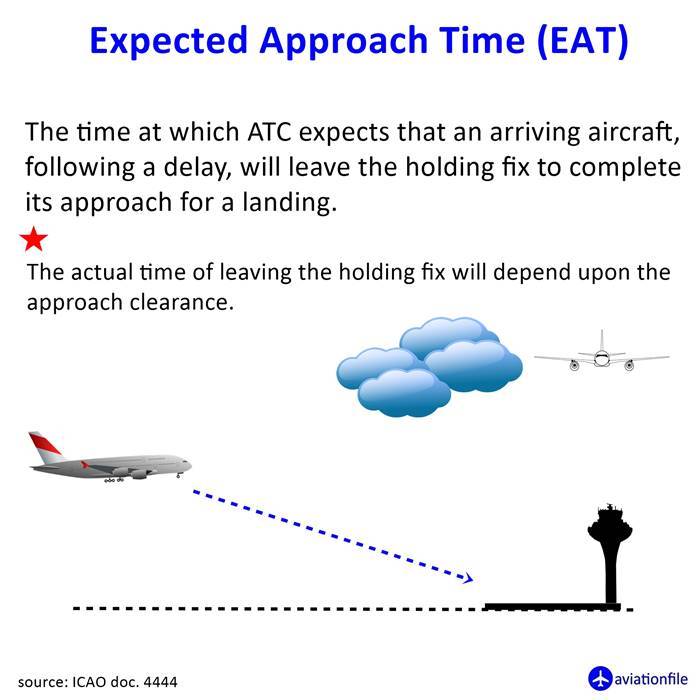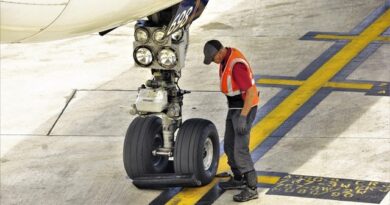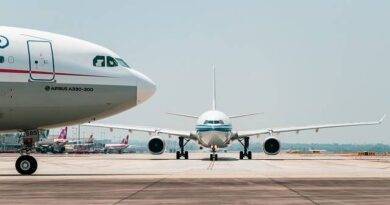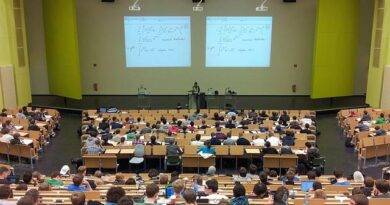Expected Approach Time (EAT)
Expected Approach Time (EAT) is a time which ATC expects that an arriving aircraft, following a delay, will leave the holding fix to complete its approach for a landing. The actual time of leaving the holding fix will depend upon the approach clearance;. This time is based on several factors such as the flight plan, air traffic control restrictions, and performance capabilities of the aircraft.

In aviation, EAT is used by air traffic control (ATC) to manage and sequence the flow of aircraft. Also it is used to provide pilots with expected arrival times. The EAT helps ATC coordinate with the other units. From airport tower and ground services it helps to inforn that the aircraft is approaching for landing.
EAT is typically calculated by the flight dispatch or flight planning department. It is updated in flight by the aircraft’s flight management system. The EAT is then set to the ATC system, which uses it to manage the sequencing and spacing of incoming aircraft.
It is important to note that the EAT is not a guarantee of the actual arrival time. It is a fact that EAT is based on predictions and subject to changes due to factors such as weather, air traffic control restrictions, and unexpected events.
- EAT Definition | Law Insider: https://www.lawinsider.com/dictionary/expected-approach-time
- Tampilan Pemberian (EAT) pada Pesawat Arrival Berdasarkan Average Time Interval (ATI) di Bandara Sultan Thaha Jambi: https://jurnal.poltekbangmakassar.ac.id/index.php/poltekbang/article/download/176/88/429
- Expected Approach Times explained. – PPRuNe Forums: https://www.pprune.org/middle-east/378499-expected-approach-times-explained.html
- EAT – http://airtraffic9322.blogspot.com/2016/11/expected-approach-time-eat.html
- EAT | IVAO Documentation Library: https://wiki.ivao.aero/en/home/training/documentation


